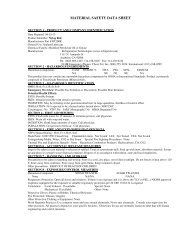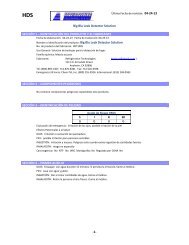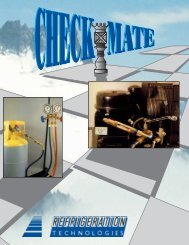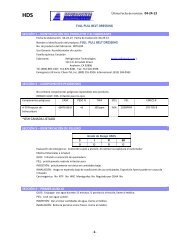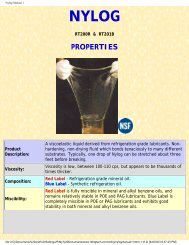Balancing of a Water and Air System (PDF
Balancing of a Water and Air System (PDF
Balancing of a Water and Air System (PDF
You also want an ePaper? Increase the reach of your titles
YUMPU automatically turns print PDFs into web optimized ePapers that Google loves.
80<br />
The entire water system must be operational: all inspections performed, final strainers<br />
installed <strong>and</strong> clean, all controls operational with all valves fully open. Set the system for<br />
balancing in the following manner:<br />
1. Determine the total coil flow <strong>and</strong> determine:<br />
2. Diversity-is there enough pumping capacity to provide 100% design water flow to each<br />
coil? If there is not enough pumping capacity to provide 100% design water flow to each<br />
coil, close the valves to the coils closest to the pump until the pump can provide 100%<br />
flow to the open coils. If there are three-way valves or a bypass valve in the system,<br />
observe that it is closed prior to balancing.<br />
3. Record the pump (s) model <strong>and</strong> serial number, the motor nameplate, the design gpm<br />
flow, <strong>and</strong> the design head. Record the variable frequency drive (VFD) data if installed.<br />
4. If a VFD is installed, set the VFD bypass for 100%. Verify the impeller size on each<br />
pump.<br />
5. Read <strong>and</strong> record the actual pump head <strong>and</strong> flow with actual motor amperage <strong>and</strong><br />
voltage. Record starter data <strong>and</strong> motor over-load protection devices size <strong>and</strong> rating.<br />
6. Set each pump to provide approximately 10% more water flow than designed.<br />
7. Record all flow meter nameplate data. Read all flow meter flows <strong>and</strong> pressure drops<br />
throughout the entire system, (ie. chillers, converters, coils, etc.), <strong>and</strong> establish flow<br />
using Equation 11.4.<br />
8. Starting with the coil having the greatest flow, adjust the coil to the design flow.<br />
9. Continue to proportion the water to each coil until all coils are balanced within ± 10%<br />
<strong>of</strong> design flow with the balancing valve <strong>of</strong> at least one coil remaining 100% open. If the<br />
system has diversity, close an equal amount <strong>of</strong> valves nearest to the pump <strong>and</strong> open the<br />
initially closed valves. Continue to proportion the water to each coil (starting with the coil<br />
closest to the pump) until all the coils are balanced within ± 10% <strong>of</strong> the design flow.<br />
10. Re-verify <strong>and</strong> record the final pump gpm <strong>and</strong> head, amperage <strong>and</strong> voltage <strong>of</strong> each<br />
pump (discharge valve position if the system does not have a variable frequency drive).<br />
When the system has a VFD <strong>and</strong> the VFD is at 100% with the discharge valve throttled to<br />
obtain design flow, it is recommended that the impeller be trimmed or the VFD limited<br />
with the discharge valve fully open.<br />
11. Record the system’s pressure differential at the pressure transmitter with the system<br />
at full flow. Adjust the coil closest to the pump closed <strong>and</strong> verify the pressure transmitter<br />
setting. Continue with the next coil until enough coils are closed to equal the minimum<br />
speed <strong>of</strong> the pump or the minimum flow through the primary heat exchangers. Verify that<br />
the closed valves closest to the pump remain closed <strong>and</strong> are not lifting <strong>of</strong>f their seats.<br />
Note that most bypasses in two-way valve systems act as a relief valve <strong>and</strong> the pump will<br />
ride its pressure curve until bypass opens. Record the minimum flow across the heat<br />
exchanger.<br />
12. Verify the coil or heat exchangers controller calibration, <strong>and</strong> record the entering <strong>and</strong><br />
leaving water temperatures.<br />
80




